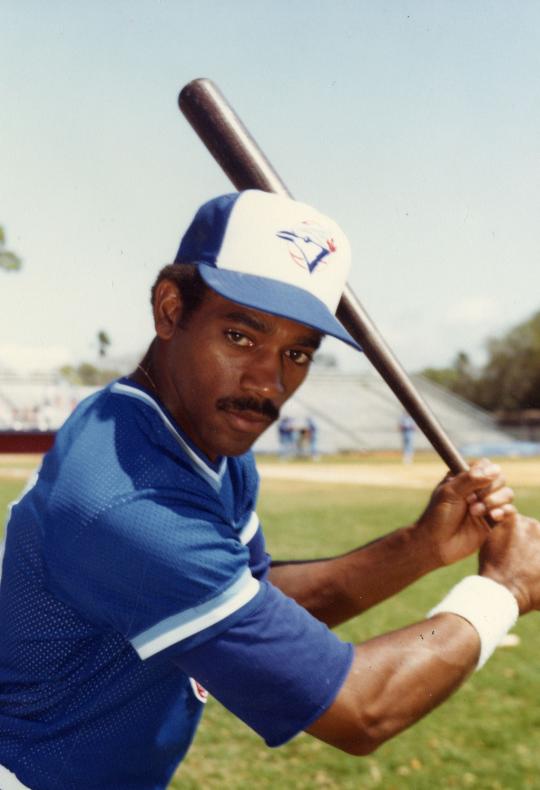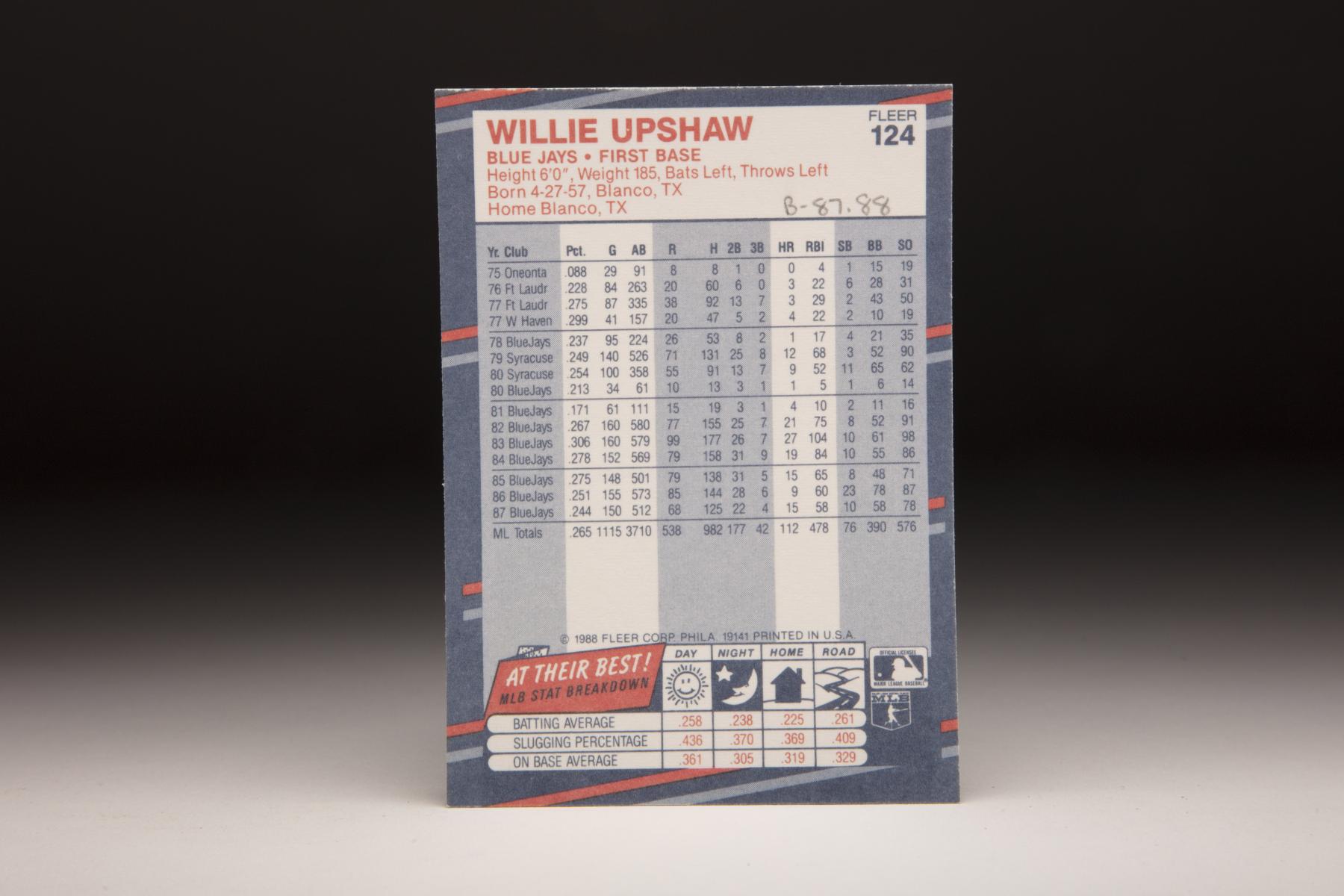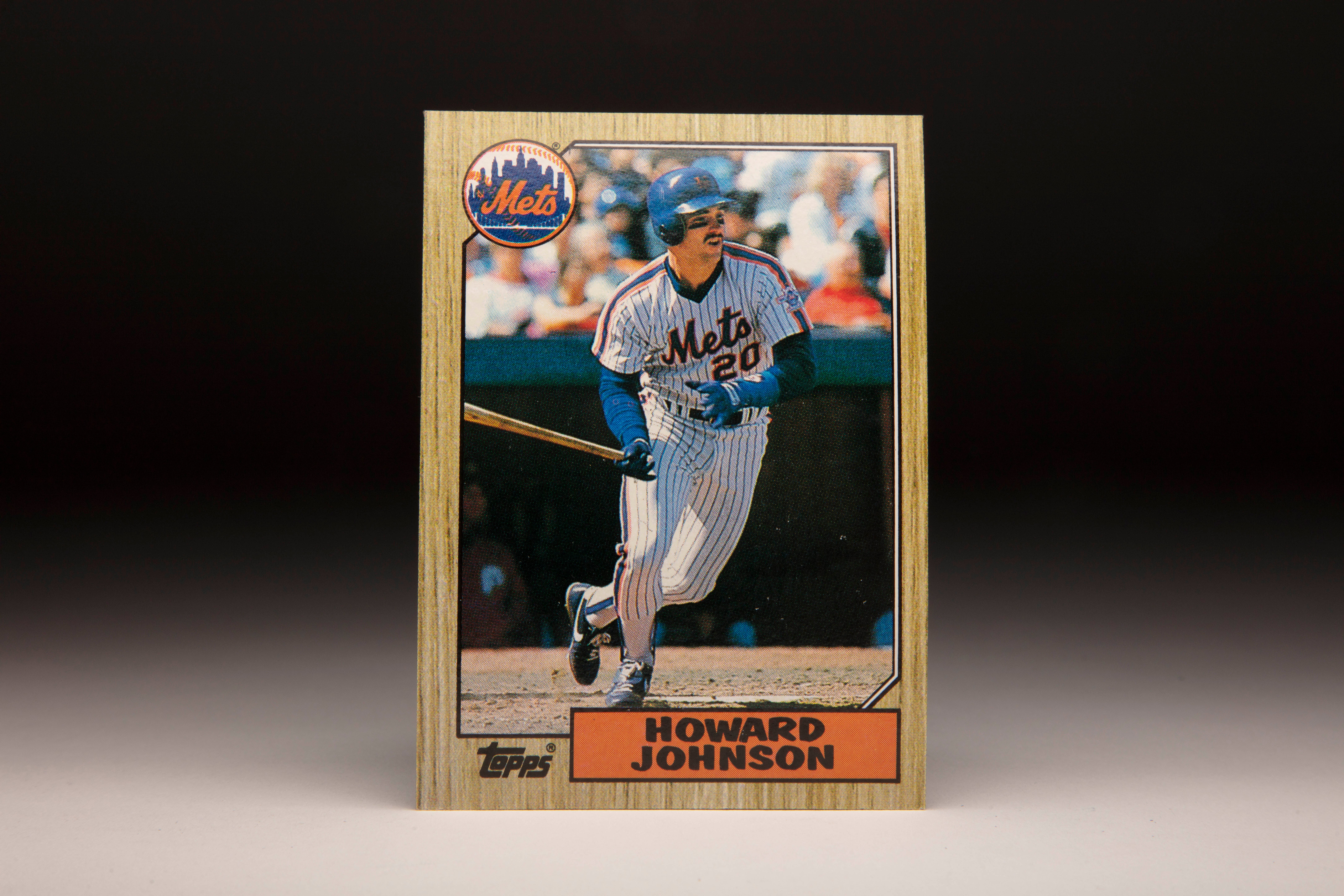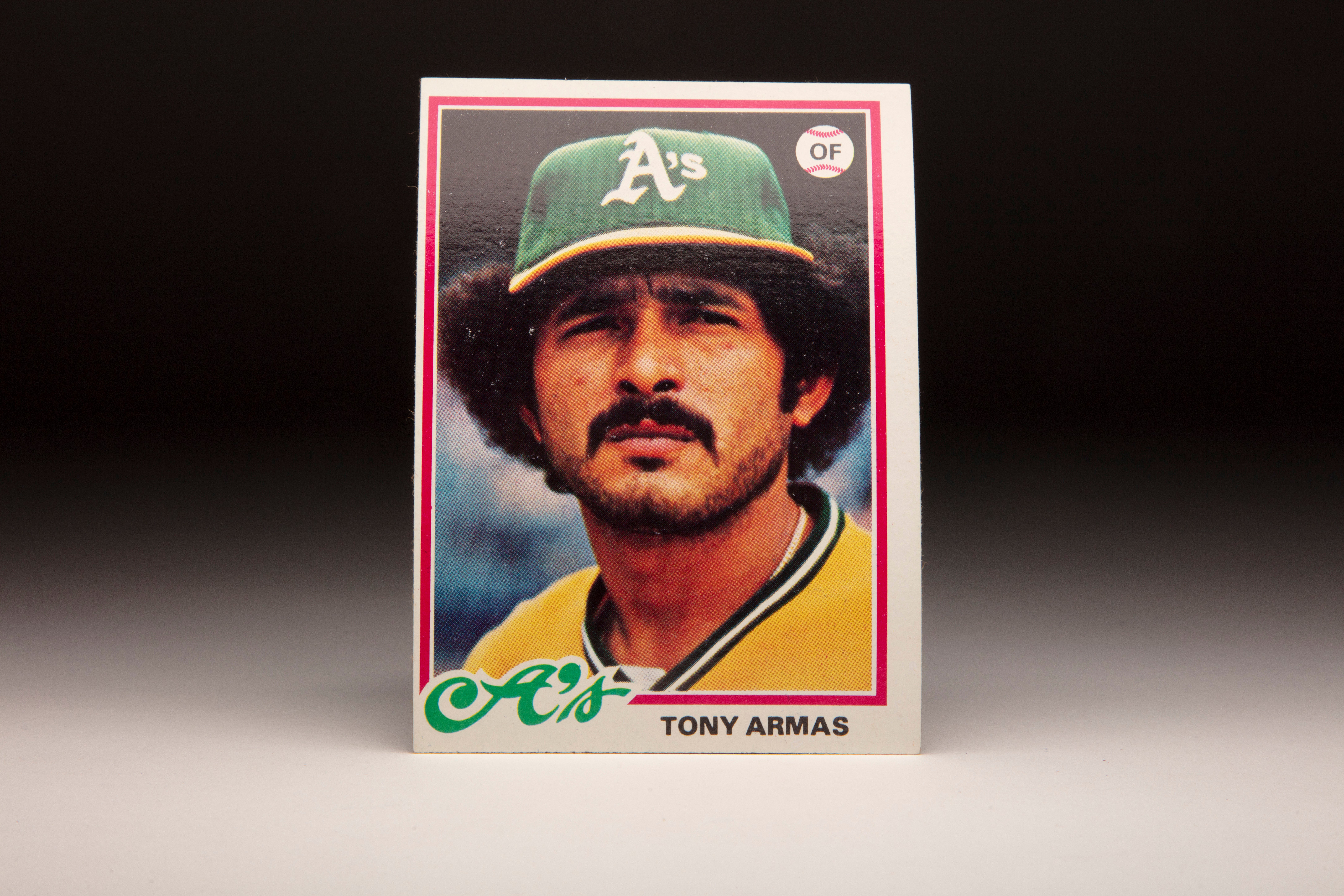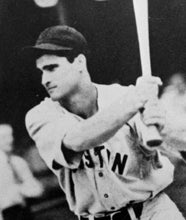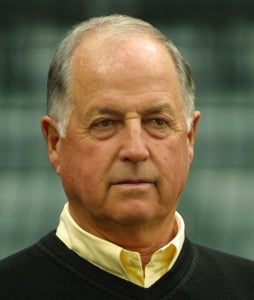- Home
- Our Stories
- #CardCorner: 1988 Fleer Willie Upshaw
#CardCorner: 1988 Fleer Willie Upshaw
When Pat Gillick took over as the Blue Jays’ general manager following the team’s inaugural season of 1977, one of his first transactions involved selecting a Yankees farmhand named Willie Upshaw in the Rule 5 Draft.
Gillick had become familiar with Upshaw when both were in the Yankees’ organization, and Gillick put the 20-year-old Upshaw on his team’s Opening Day roster and kept him there all season so New York could not reclaim him.
Seven years later, Upshaw was one of the leaders of a Toronto team that was the envy of nearly every executive in baseball. Gillick had assembled a model organization – and Upshaw was one of the pillars.
Born April 27, 1957, in Blanco, Texas – located about 30 minutes west of Austin and 30 minutes north of San Antonio – “Chuggy” Upshaw was a schoolboy athletic hero, starring for Blanco High School’s football, baseball and basketball teams. An All-Central Texas halfback, Upshaw – a cousin of Pro Football Hall of Famer Gene Upshaw and also of Marvin Upshaw, who played nine years in the NFL – decided baseball was his future when the Yankees selected him in the fifth round of the 1975 MLB Draft. The Yankees gave him a $4,000 bonus and agreed to pay for his college education.
“He was a real hard-working an athlete (and) an ideal kid,” Eickenloff told the Austin American-Statesman. “And it’s paid off for him.”
Be A Part of Something Greater
There are a few ways our supporters stay involved, from membership and mission support to golf and donor experiences. The greatest moments in baseball history can’t be preserved without your help. Join us today.
Upshaw reported to Class A Oneonta of the New York-Penn League – located about 30 miles from Cooperstown – following the draft. He hit just .088 in 29 games but impressed the coaching staff with his work ethic.
“I worked regularly since I was 15,” Upshaw, who was one of 15 children, told the Montreal Gazette. “We had a lot of motivation. My parents stayed on us. And they encouraged us to play sports. They knew that was one way out.”
Upshaw spent the entire 1976 campaign with Class A Fort Lauderdale, hitting .228 with three homers in 84 games. But just like at Oneonta, his walk-to-strikeout ratio was almost 1:1, indicating solid pitch recognition skills.
Upshaw split the 1977 season between Fort Lauderdale and Double-A New Haven, hitting .283 with seven homers, 51 RBI, 58 runs scored and a .352 on-base percentage in 128 games.
“The first couple years I was homesick,” Upshaw told the Gazette. “But I never thought of quitting. I was afraid to fail, afraid to lose, afraid to go home without being successful like everyone else in my family.”
Following the 1977 season, the Yankees – in the process of an unprecedented free-agent spending spree – left Upshaw off the 40-man roster. For $25,000, Gillick – who made a career out of finding gems in the Rule 5 Draft – brought Upshaw to Toronto.
Rules 5 Draft stipulations stated that players selected had to remain on a team’s big league roster for the entire year or be offered back to the original team. But the second-year Blue Jays were more than willing to endure some growing pains in exchange for a potential future starter. And Upshaw was the sensation of Blue Jays camp in Spring Training of 1978, drawing several mentions in national wire stories.
“Our hitting coach, Bobby Doerr, says Upshaw has one of the finest hitting strokes he’s seen in a player that young,” Blue Jays manager Roy Hartsfield told United Press International. “But his best asset has been his defensive skills. He has excellent speed and, most importantly, he loves to play.”
In 95 games off the bench in 1978, Upshaw hit .237 with a homer and 17 RBI for a Toronto team that lost 102 games. Now free of the Rule 5 restrictions, the Blue Jays sent Upshaw to Triple-A Syracuse in 1979, where he hit .249 with 12 homers and 68 RBI in 130 games.
Upshaw made the Blue Jays’ Opening Day roster in 1980 but was hitting .152 in 35 games at the end of May when Toronto optioned him back to Syracuse. He fared better in his second year in the International League, cutting his strikeouts and increasing his on-base percentage to .367 while totaling nine homers and 52 RBI in 100 games with the Chiefs.
He returned to Toronto in September and closed the year on a positive note with a 3-for-3 effort against the Red Sox in the season’s final game. He spent the entire 1981 season with Toronto, earning the starting left field job on Opening Day after hitting .433 with 16 RBI in Spring Training. But after coming off the bench for much of the campaign – and battling a broken finger – Upshaw ultimately finished the year with a .171 batting average in 61 games.
But Upshaw had another fantastic Spring Training in 1982, hitting .333. New Blue Jays manager Bobby Cox that he needed to see what Upshaw could do.
“We had to find out once and for all whether this kid was going to be able to help us,” Cox told the New York Daily News. “We felt we had to let him sink or swim.”
Upshaw won the starting first baseman’s job – and the Blue Jays made sure they committed to him by trading John Mayberry, who had been the team’s first baseman since 1978, to the Yankees on May 5.
“John is my friend – a class guy who helped me a lot,” Upshaw told the Daily News. “The only thing that is different is they’re letting me play.”
Upshaw started the 1982 season in a groove and was hitting .338 in early June before the league began to adjust. He also impressed observers with his fielding at first base, where he finished second in the AL at that position with 101 assists.
“This is my first year over in this league in a while,” Cox told the Daily News in 1982. “But I haven’t seen a first baseman with more range than he has.”
Upshaw finished the season with a .267 batting average, 21 homers, 77 runs scored and 75 RBI. With talented young outfielders Jesse Barfield and Lloyd Moseby already in the lineup – and youngsters like George Bell and Tony Fernández on the way – the Blue Jays were positioning themselves as future contenders. And Upshaw was viewed as one of the centerpieces of the organization.
“There is no question we have some talent on this team,” Upshaw told the Clearwater Times in Spring Training of 1983. “We are confident when we go out on that field.”
The 1983 Blue Jays broke through with the first winning season in franchise history, posting 89 victories. Upshaw was the power behind that improvement, hitting .306 with 99 runs scored and team-leading totals in home runs (27, tied with Barfield) and RBI (104). He finished 11th in the AL Most Valuable Player voting.
In 1984, Upshaw started quickly and was among the league leaders in virtually every offensive category heading into July. He cooled off in the second half to finish with a .278 batting average, 19 homers and 84 RBI as the Blue Jays again won 89 games.
“If we were in another city, we’d have more notoriety as a team and as individuals,” Upshaw said as the Blue Jays were ascending to the upper echelon of American League teams. “But that’s OK. There’s a lot of country in me. I like the quiet.”
But Upshaw and the Blue Jays would get attention in 1985 when they won the American League East. Toronto entered the American League Championship series vs. the Royals as heavy favorites, and the Blue Jays jumped out to a 3-games-to-1 lead as Upshaw scored two runs in a 6-1 win in Game 1. But the Royals rallied for three straight wins to take the series. Upshaw cut Kansas City’s lead to 2-1 in Game 7 with a fifth-inning RBI double that scored Dámaso García, but the Royals responded with four runs in the top of the sixth to put the game out of reach.
“It’s a matter of opinion, but in my mind I feel we’re still the best team,” Upshaw told the Associated Press after Game 7. “I hope this makes us want to come back again.”
But in 1986, Upshaw’s power numbers continued the decline that began in 1985. He hit .275 with 15 homers and 65 RBI in Toronto’s division-winning season, then batted .251 with nine homers and 60 RBI in 1986 – adding career-highs in stolen bases (23) and walks (78) – as the Blue Jays went 86-76 to finish fourth in the AL East.
Toronto bounced back in 1987, however, and seemingly held a firm grip on the division title – leading the Tigers by three-and-a-half games with seven to play. But the Blue Jays lost each one of those remaining contests, including a three-game sweep on the season’s final weekend in Detroit, giving the Tigers the title.
Upshaw, who did not play in the season’s final game in favor of a young Cecil Fielder, finished the season with a .244 batting average, 15 homers and 58 RBI in 150 games.
On March 26, 1988, the Blue Jays – who had Fielder and Fred McGriff waiting in the wings at first base – sold Upshaw’s contract to the Indians.
“Willie will be our first baseman,” Indians manager Doc Edwards told the News-Journal of Mansfield, Ohio. “He’ll be a steadying influence on the infield. It’s nice to be able to get an infielder of that caliber.”
The Indians assumed Upshaw’s contract, which paid him $900,000 in the final year of his deal. He virtually matched his 1987 numbers, hitting .245 with 11 homers and 50 RBI in 149 games.
Now a free agent, Upshaw found his best offer was in Japan – and signed a two-year deal worth $2.5 million with the Daiei Hawks of the Japan Pacific League. He joined another former Cleveland player – Tony Bernazard – to form a great combination in 1989. Upshaw hit 33 home runs and drove in 90 runs, trailing only Bernazard’s 34 and 93 in each category among the Hawks.
But Upshaw battled injuries in 1990 and appeared in only 51 games, hitting .220 with six homers and 17 RBI. With that, his playing career was over.
Upshaw entered the coaching ranks following his playing days, eventually managing the Bridgeport Bluefish of the independent Atlantic League from 1998-2000 before serving as first base coach with the San Francisco Giants from 2005-07. He later managed the Bluefish again from 2009-14, winning Atlantic League Manager of the Year honors in 2010 after leading the team to the Liberty Division title.
Over 10 big league seasons, Upshaw hit .262 with 199 doubles, 123 homers and 528 RBI to go with a .335 on-base percentage. He was not the biggest star in Blue Jays history, but – by helping establish the organization’s reputation for finding hidden talent – may be among the most important.
“Maybe one day I’ll stop being the cousin of (Gene),” Upshaw told the Montreal Gazette in 1984. “And maybe Gene and Marvin will be the cousin of…”
Craig Muder is the director of communications for the National Baseball Hall of Fame and Museum


